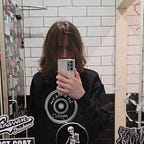January 2024 — How I currently organise my Obsidian vault as a Cybersecurity enthusiast
As I’ve talked about in previous blog posts, I use Obsidian as my main note-taking application. This is off the back of using tools like Notion, Confluence and OneNote for a long, long time and never really being satisfied. OneNote has an excellent writing and multi-media experience, but lacks in any kind of advanced knowledge features like backlinks or properties (and markdown support!). Notion has absolutely excellent properties and databases, decent performance, and availability across multiple devices. However, the actual writing experience always felt lacking. Confluence is neat, but a bit too enterprise for my needs, without any of the more advanced knowledge features either.
Obsidian is the Swiss army knife of note apps, and is a deceptively simple tool upon first installation. But as you dig in, you’ll find yourself adding on more and more complexity, and before you know it, it has gotten out of control. For that reason, I’ve spent an inordinate amount of time messing about with my Obsidian layout and want to share where I’ve landed in January 2024.
Key Concepts
The idea behind Key Concepts is to create a place to hold all the central pages that others refer to through backlinking. Terms like ‘Microsoft Sentinel’ and ‘Detection Engineering’ are all concepts or technologies which are easily linkable.
Some concepts are also created as ‘Folder Notes’, so they can hold all the notes related to that concept. This to me feels like a nice compromise between a classical folder structure without sacrificing backlinking and the organic inspiration Obsidian can create.
‘Key concepts’ is currently a folder in the root of my vault directory.
Daily and Reading
I heavily use the app Readwise to collect and annotate resources from all around the web. Readwise came in and displaced Notion, which was the previous place I collected all my resources (And is a perfectly serviceable free alternative to Readwise if you don’t need all the features!). The reading directory is simply where all those synced highlights and notes go.
I’ve setup the template such that the document tags in Readwise correspond to the key concepts I talked about above. This way I can see all the relevant Readwise highlights in the linked mentions and graph! This system proved very useful for my recent post about building a detection engineering capability, which involved linking to many disparate sources I’d gathered over 12+ months in Readwise.
As for the daily note, it is nothing special – each day’s note is essentially a scratch pad for whatever I’m working on, and I’ll often cut/paste content out into their own notes for organisation at the end of the day.
Plugins
I hate relying on plugins for my workflow and try to avoid leaning on them for writing, so that what I write will be legible in other software. That said though, there are a handful of plugins that are quite central to my current workflow which I’ll briefly list below.
- Folder Note - for allowing me to sort notes under concepts
- Templater – for templatising all the things
- Dataview - for doing cool queries based on properties and file metadata
- Image converter, image toolkit, editor width slider – Quality of life improvements for the writing experience
- Excalidraw – Creates the coolest diagrams
- Obsidian Sync – Yes, I pay for sync. It is by far the best way to handle syncing notes and it goes towards supporting the devs!
Future Improvements
I’m currently playing with different ways to store my notes on a per tool basis, kind of like a personal ‘hacker recipes’ wiki. I’m also looking for ways to carve out space for notes that aren’t related to Cybersecurity or computers at all – books, music, movies, whatever I’ve got thoughts on. This is starting to lead me down a PARA-esque path – probably not as folders, but perhaps through tags. Who knows!
This is currently where my vault stands as of time of writing. My goal is to stick with Obsidian as much as possible and force myself to adapt, rather than following the urge to jump ship to some other product.
